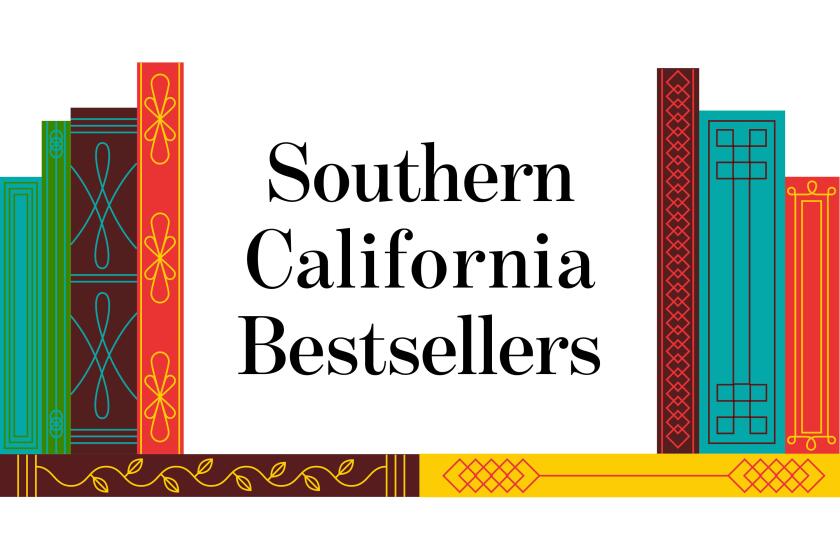The Minor Leagues of American Evangelism : CAN SOMEBODY SHOUT AMEN!<i> by Patsy Sims (St. Martin’s Press: $15.95; 256 pp.) </i>
- Share via
In many ways, the minor leagues are intrinsically more interesting than the majors. The players are not so outlandishly gifted, and they seem to have a love for the game that is rarely displayed by the superstars. And, perhaps most endearing, minor leaguers are not bedecked in those gold necklaces that weigh down the big leaguers.
For those bored by headlines telling of the disarray of contemporary big-time religion, this book on grass-roots revivalism is a welcome relief. Patsy Sims set out to view the underside of American religion; she visited some pretty remote locales in her quest. What she found was not entirely unlike the slick television religion that has gotten so much bad press in the last 18 months. Personal ambition is present in the small tents and tabernacles she visited, and even the poor have some affection for money when it is used in the Lord’s work. But, all in all, out on the hustings, a love of the Lord lurks much nearer the surface.
Sims’ childhood in the polite Protestant suburbs of the South left her fascinated by the dusty tents that crisscrossed the nation bringing salvation and healing to the nation’s poor--by the “Holy Roller” legacy. In 1981, she began attending services and interviewing evangelists, their families, their team members, and their audiences. The resulting book is more travelogue than history or commentary. It is the impressions of a literate and sympathetic viewer of an alien culture; it is marked by empathy, culture shock, and, sometimes, an unbecoming preoccupation with the bizarre.
“Can Somebody Shout Amen?” sketches the author’s encounters with six Pentecostal evangelists. R. W. Schambach and Ernest Angley are second-echelon revivalists who are well-known figures in the Pentecostal world (probably Triple A players in the baseball analogy). They preside over multimillion dollar ministries. H. Richard Hall is an old-time revivalist who has campaigned through the small towns of the South for nearly 40 years. At his headquarters in Cleveland, Tenn., he runs a boot camp for young evangelists. Sims’ other three subjects, H. Wayne Simmons, Tommy Walker, and Mike Shreve, are examples of the younger and more marginal revivalists who fight daily battles for economic survival.
A seventh essay is entitled “The Snake-Handlers.” A long digression placed squarely in the middle of the book, it describes Sims’ visit to the Holiness Church of God in Jesus Name in Carson Springs, Tenn., where she witnessed the rare ritual of snake handling.
The seven chapters are a diverse collection, and one that has little logical unity. It is true that all of the characters in the book are indebted in some way to Pentecostal theology, but their differences are probably as important as that common thread. Sometimes Sims seems to focus on “tent meetings,” but several of the evangelists no longer hold tent meetings, and that motif never appears in the snake handling chapter. And none of Sims’ evangelists will take kindly to being treated as fellow travelers with snake handlers.
This lack of focus is the chief weakness of the book. Sims tries to locate her subjects through references to the works of religious historians and sociologists, but those efforts are far from satisfactory. Unfortunately, the only apparent theme is religious faith and practice that Sims found to be exotic. Too often, her excursions into history offer neither background nor explanation, only carefully culled examples of extreme behavior from the past.
Overlooking these flaws, Sims has written a series of engaging personal commentaries about people she found “more fascinating than I ever imagined.” Her essays are impressionistic and guileless--openly confessing the author’s prejudices and naivete. But they are also fair-minded, perceptive, and often deftly written. Generally put off by the public performances of the evangelists, Sims warms to the people she interviews, including the revivalists.
This book is a tribute to the persistence of the author. Interviews with Ernest Angley come only for the determined, and few intellectuals travel the clay roads to the churches of the snake handlers. But it is clearly her personal empathy and warmth that made Sims’ subjects feel at home with her, and that yielded hours of valuable oral history. Sims displays an uncanny ear for the various dialects that she encountered, and the book is filled with dialogue as authentic as the descriptions of the Tennessee backcountry. One snake handler told Sims: “Clyde handled ‘em an’ we all had good vict’ry over ‘em.” Sims is at her best when interviewing the female characters in the revival drama--the wives and the supporters of the evangelists who share the hardships of the campaign trail but not the attention.
Sims’ portraits are entertaining reading. But they are more than that. They are glimpses into the lives of real people, and her stories muddle the glib generalization that all evangelists are charlatans. Sims’ essays expose the fertile soil of religious devotion and faith that has been the seedbed of the modern religious superstars. Oral Roberts, Jimmy Swaggart, and Jim Bakker have traveled those back roads that so astonished Sims. Here is the society that created them, and to some extent that sustains them. If the glow of faith seems to dim under television’s bright lights, most evangelists have memories of darker nights in humbler places when faith sustained them. Sims gives outsiders a glimpse of those more remote places.
More to Read
Sign up for our Book Club newsletter
Get the latest news, events and more from the Los Angeles Times Book Club, and help us get L.A. reading and talking.
You may occasionally receive promotional content from the Los Angeles Times.







